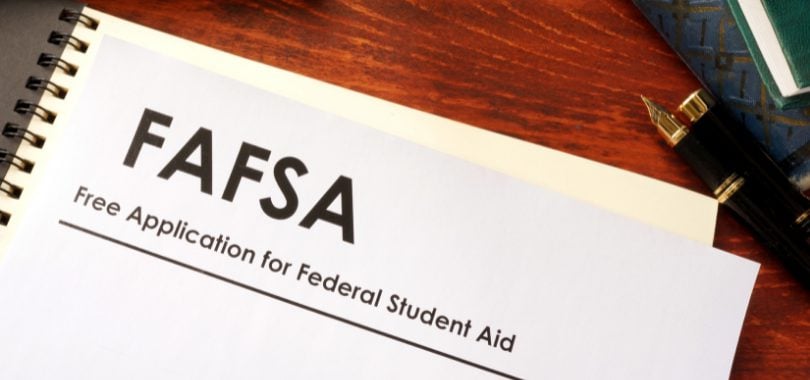You must file the FAFSA or Free Application for Federal Student Aid in order to qualify for any type of federal or institutional financial aid for college. After you submit your FAFSA, it is sent to all the colleges you’ve listed on the application. Every college that accepts your application will send you a financial aid award letter along with your acceptance letter. Knowing how to read the FAFSA results is important. This will help you calculate exactly how much you need to pay from your personal savings towards the cost of college.
So, here’s how you can understand your FAFSA results once you receive them:
How Will You Receive Your FAFSA Results?
You will receive your FAFSA results in the form of a “Student Aid Report” or SAR. This document gives you the information you need to know regarding your Expected Family Contribution (EFC), expected eligibility concerning federal student loans and Federal Pell Grants, and verification selection.
If you provided your email address when you filed the FAFSA, you should receive your SAR in about 3-5 days at that email address. If you provided your postal address, you can expect to receive it in the mail in about 7-10 days. The exact timeline of its arrival depends on USPS delays.
What Does The FAFSA Award Letter Include?
The financial aid award letter explains the types and amounts of federal financial aid you’ll receive for that academic year. This includes federal grants, scholarships, work-study, and student loan options. The financial aid award letter also includes the non-federal financial aid that the school is offering you.
There’s no standard format that all colleges use for writing the financial award letter. Every college uses its own format to write out this letter. However, there are a few terms, phrases, and components that you will find in the award letters from all schools.

How To Understand Your FAFSA Results
There are likely some terms and information in your award letter that you might not have heard of or understand at first. The key to reading your FAFSA results is to understand what each of the elements means.
Here’s a guide for some you need terms you need to know.
Cost of Attendance (COA)
By law, all colleges are required to have an official cost of attendance. The COA will be included in a financial award letter and is the estimate of what it costs for one academic year at that school. The COA includes tuition and fees, room and board, books, supplies, and transportation. Keep in mind, the COA is just an estimate. It’s not necessarily what you will pay. Your actual tuition bill will depend on your family’s financial circumstances.
Expected Family Contribution (EFC)
The Expected Family Contribution is the number that the Department of Education believes your family could contribute to your education. It is calculated based on the information you submitted on your FAFSA. It doesn’t mean that’s what you’ll actually pay for college. In fact, colleges use slightly different data and calculations to assess your financial situation. They use your EFC as a guideline to calculate how much financial aid you’re eligible for. In general, the lower your EFC, the more financial aid you’ll get. You can find your EFC on the first page, underneath the date on the top right.
Financial Need
Financial need is the difference between how much it costs to attend a school and your ability to pay the full cost. Every student will have a different financial need depending on a variety of factors. Your financial need is calculated by subtracting your Estimated Family Contribution (EFC) from the Cost of Attendance (COA).
Gift Aid
Gift aid refers to grants, scholarships, and any other forms of financial aid that you don’t have to pay back. Your FAFSA results highlight which types of gift aid you will be awarded. It will also highlight how much you will receive for each type of gift aid.
Work-Study
Work-study is not included in all students’ FAFSA results. You’ll find it in your financial aid award letter only if you opted for work-study in your FAFSA. Work-study programs are operated by individual colleges but are funded by the federal government. Every college campus will have completely different work-study opportunities. If you qualify for work-study, it’s your responsibility to find out what jobs are available, the hourly rates, and whether they are on or off campus.
Student Loans
Your FAFSA results will highlight which types of federal student loans you qualify for. It will also include details of the maximum amount you qualify for against each type of federal student loan. Federal student loans are financial aid that you will have to repay with interest after you graduate. There are different types of federal student loans, each with its own interest rate and terms and conditions. The award letter will include details of the interest rates, fees if any, length of repayment, monthly payments, and when interest starts accruing. You can choose to accept or decline your student loan options or you can accept only what you need and decline the rest.
Verification
An asterisk next to your EFC and a notification within your SAR Acknowledgment letter means that you have been selected for verification. If this appears on your report, you will have to submit more financial documentation to colleges. This happens if there are mistakes in your submission, conflicting data or information, or data that isn’t “normal” for submissions.
Students who are flagged will have to complete a Verification Worksheet that can be requested from a college’s financial aid office. Don’t be too worried if you receive this request – it’s not unusual or uncommon.
Data Release Number (DRN)
The Data Release Number or DRN is a 4-digit number that is included in every FAFSA report found in the left-hand corner of mailed reports and upper right corners of email reports. Your DRN is important if you’re applying to more schools than you originally listed on your FAFSA. You need it to submit your SAR to all the new schools you apply to. You will also need your DRN if you move.
Loan Summary
Your loan summary will be on page 4. Look on the top half of the page and will only contain any current federal student loans.
FAFSA Information
There will also be a few pages in your SAR that includes the information you supplied on your application. If you notice any incorrect or outdated information, you need to submit the changes as soon as possible.
Importance Of Knowing How To Read Your FAFSA Results
Understanding your FAFSA results helps you and your family budget and plan how to cover the cost of tuition and other college expenses. The financial aid award letter details the types and amount of all financial aid that’s offered to you. This includes gift aid in the form of grants and scholarships as well as student loans. These FAFSA results pertain only to the upcoming school academic year.
You will have to file the FAFSA every academic year to receive financial aid for that year. Depending on your financial circumstances, your financial aid options may change every year.
It’s important to know how to read your FAFSA results and understand your financial aid options. Once you know how much aid you qualify to receive, you need to review your finances to determine how much your family will have to contribute. If your family expects to contribute more than they can afford, you have two options available. You can either choose a less expensive institution or take a private student loan to bridge the funding gap.
If you are considering a private student loan, try College Raptor’s Student Loan Finder to compare terms and rates and find the right loan for you.
| Lender | Rates (APR) | Eligibility | |
|---|---|---|---|
 |
5.50%-16.12%* Variable
3.99%-15.61%* Fixed
|
Undergraduate and Graduate
|
VISIT CITIZENS |
 |
5.54% - 15.70% Variable
3.99% - 15.49% Fixed
|
Undergraduate and Graduate
|
VISIT SALLIE MAE |
 |
4.63% - 17.99% Variable
3.49% - 17.99% Fixed
|
Undergraduate and Graduate
|
VISIT CREDIBLE |
 |
6.00% - 13.75% Variable
3.99% - 13.75% Fixed
|
Undergraduate and Graduate
|
VISIT LENDKEY |
 |
5.66% - 14.72% Variable
3.69% - 14.56% Fixed
|
Undergraduate and Graduate
|
VISIT ASCENT |
 |
3.70% - 8.75% Fixed
|
Undergraduate and Graduate
|
VISIT ISL |
 |
5.62% - 16.85% Variable
3.69% - 16.49% Fixed
|
Undergraduate and Graduate
|
VISIT EARNEST |
 |
5.00% - 14.22% Variable
3.69% - 14.22% Fixed
|
Undergraduate and Graduate
|
VISIT ELFI |









